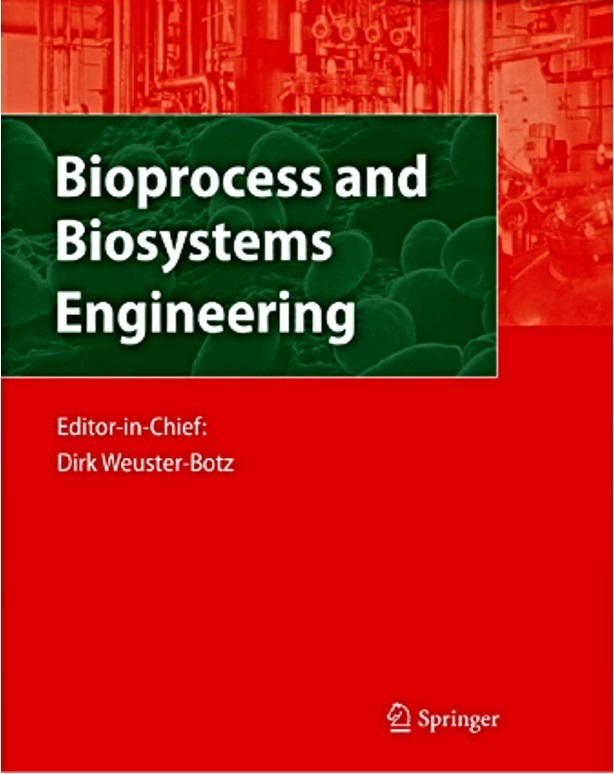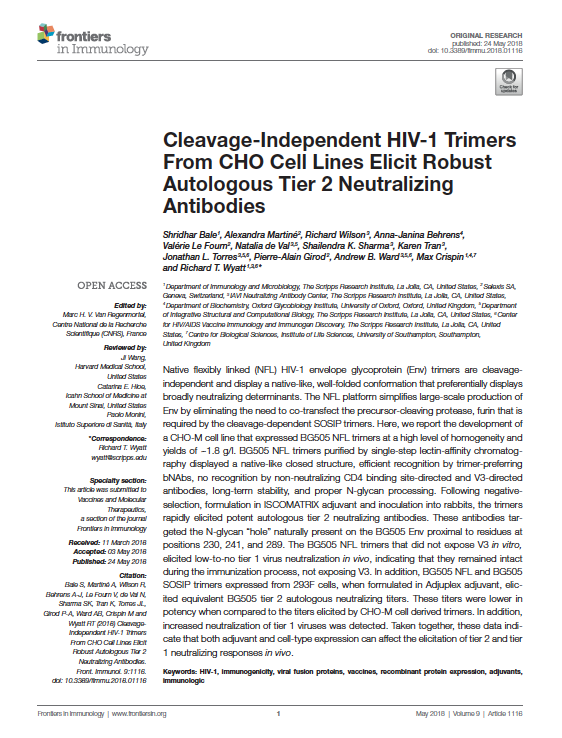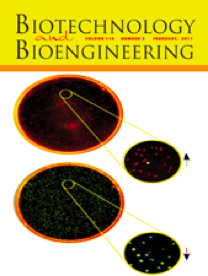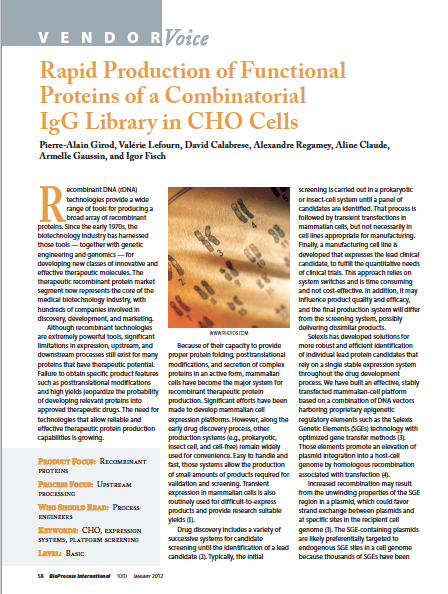In the field of therapeutic antibody production, diversification of fed-batch strategies is flourishing in response to the market demand. All manufacturing approaches tend to follow the generally accepted dogma of increasing titer since it directly increases manufacturing output. While titer is influenced by the biomass (expressed as IVCD), the culture time and the cell-specifc productivity (qp), we changed independently each of these parameters to tune our process strategy towards adapted solutions to individual manufacturing needs. To do so, we worked separately on the increase of the IVCD as high seeding fed-batch capacity. Yet, as intensified fed-batch may not always be possible due to limited facility operational mode, we also separately increased the qp with the addition of specifc media additives. Both strategies improved titer by 100% in 14 days relative to the standard fed-batch process with moderate and acceptable changes in product quality attributes. Since intensified fed-batch could rival the cell-specifc productivity of a conventional fed-batch, we developed novel hybrid strategies to either allow for acceptable seeding densities without compromising productivity, or alternatively, to push the productivity the furthest in order to reduce timelines.
Selexis admin
Recent posts by Selexis admin

1 min read
Exploring the limits of conventional small‑scale CHO fed‑batch for accelerated on demand monoclonal antibody production
Keywords: CHO cell culture Intensified fed-batch ambr15 Productivity Biomass

1 min read
Cleavage-Independent HIV-1 Trimers From CHO Cell Lines Elicit Robust Autologous Tier 2 Neutralizing Antibodies
Native flexibly linked (NFL) HIV-1 envelope glycoprotein (Env) trimers are cleavage-independent and display a native-like, well-folded conformation that preferentially displays broadly neutralizing determinants. The NFL platform simplifies large-scale production of Env by eliminating the need to co-transfect the precursor-cleaving protease, furin that is required by the cleavage-dependent SOSIP trimers. Here, we report the development of a CHO-M cell line that expressed BG505 NFL trimers at a high level of homogeneity and yields of ~1.8 g/l. BG505 NFL trimers purified by single-step lectin-affinity chromatography displayed a native-like closed structure, efficient recognition by trimer-preferring bNAbs, no recognition by non-neutralizing CD4 binding site-directed and V3-directed antibodies, long-term stability, and proper N-glycan processing. Following negative-selection, formulation in ISCOMATRIX adjuvant and inoculation into rabbits, the trimers rapidly elicited potent autologous tier 2 neutralizing antibodies. These antibodies targeted the N-glycan “hole” naturally present on the BG505 Env proximal to residues at positions 230, 241, and 289. The BG505 NFL trimers that did not expose V3 in vitro, elicited low-to-no tier 1 virus neutralization in vivo, indicating that they remained intact during the immunization process, not exposing V3. In addition, BG505 NFL and BG505 SOSIP trimers expressed from 293F cells, when formulated in Adjuplex adjuvant, elicited equivalent BG505 tier 2 autologous neutralizing titers. These titers were lower in potency when compared to the titers elicited by CHO-M cell derived trimers. In addition, increased neutralization of tier 1 viruses was detected. Taken together, these data indicate that both adjuvant and cell-type expression can affect the elicitation of tier 2 and tier 1 neutralizing responses in vivo.
Bale S, Martiné A, Wilson R, Behrens A-J, Le Fourn V, de Val N, Sharma SK, Tran K, Torres JL, Girod P-A, Ward AB, Crispin M and Wyatt RT (2018) Cleavage-Independent HIV-1 Trimers From CHO Cell Lines Elicit Robust Autologous Tier 2 Neutralizing Antibodies. Front. Immunol. 9:1116. doi: 10.3389/fimmu.2018.01116
Keywords: recombinant protein expression HIV-1 immunogenicity viral fusion proteins adjuvants vaccines

1 min read
MAR-Mediated Transgene Integration into Permissive Chromatin and increased expression involve an SD-MMEJ-like DNA repair Pathway.
Untargeted plasmid integration into mammalian cell genomes remains a poorly understood and inefficient process. The formation of plasmid concatemers and their genomic integration has been ascribed either to non-homologous end-joining (NHEJ) or homologous recombination (HR) DNA repair pathways. However, a direct involvement of these pathways has remained unclear. Here, we show that the silencing of many HR factors enhanced plasmid concatemer formation and stable expression of the gene of interest in Chinese hamster ovary (CHO) cells, while the inhibition of NHEJ had no effect. However, genomic integration was decreased by the silencing of specific HR components, such as Rad51, and DNA synthesis-dependent microhomology-mediated end-joining (SD-MMEJ) activities. Genome-wide analysis of the integration loci and junction sequences validated the prevalent use of the SD-MMEJ pathway for transgene integration close to cellular genes, an effect shared with matrix attachment region (MAR) DNA elements that stimulate plasmid integration and expression. Overall, we conclude that SD-MMEJ is the main mechanism driving the illegitimate genomic integration of foreign DNA in CHO cells, and we provide a recombination engineering approach that increases transgene integration and recombinant protein expression in these cells.
Kostyrko K, Neuenschwander S, Junier T, Regamey A, Iseli C, Schmid-Siegert E, Bosshard S, Majocchi S, LeFourn V, Girod PA, Xenarios I and Mermod N (2016). MAR-Mediated Transgene Integration into Permissive Chromatin and increased expression involve an SD-MMEJ-like DNA repair Pathway. Biotechnol Bioeng. 2016 Aug 29. doi: 10.1002/bit.26086.

1 min read
Use of human MAR elements to improve retroviral vector production.
Retroviral vectors have many favorable properties for gene therapies, but their use remains limited by safety concerns and/or by relatively lower titers for some of the safer self-inactivating (SIN) derivatives. In this study, we evaluated whether increased production of SIN retroviral vectors can be achieved from the use of matrix attachment region (MAR) epigenetic regulators. Two MAR elements of human origin were found to increase and to stabilize the expression of the green fluorescent protein transgene in stably transfected HEK-293 packaging cells. Introduction of one of these MAR elements in retroviral vector-producing plasmids yielded higher expression of the viral vector RNA. Consistently, viral titers obtained from transient transfection of MAR-containing plasmids were increased up to sixfold as compared with the parental construct, when evaluated in different packaging cell systems and transfection conditions. Thus, use of MAR elements opens new perspectives for the efficient generation of gene therapy vectors.
Buceta M, Galbete JL, Kostic C, Arsenijevic Y, Mermod N. Gene Ther. 2011 Jan;18(1):7-13. Epub 2010 Sep 2.

1 min read
Epigenetic regulatory elements: recent advances in understanding their mode of action and use for recombinant protein production in mammalian cells.
Successful generation of high producing cell lines requires the generation of cell clones expressing the recombinant protein at high levels and the characterization of the clones’ ability to maintain stable expression levels. The use of cis-acting epigenetic regulatory elements that improve this otherwise long and uncertain process has revolutionized recombinant protein production. Here we review and discuss new insights into the molecular mode of action of the matrix attachment regions (MARs) and ubiquitously-acting chromatin opening elements (UCOEs), i.e. cis-acting elements, and how these elements are being used to improve recombinant protein production. These elements can help maintain the chromatin environment of the transgene genomic integration locus in a transcriptionally favorable state, which increases the numbers of positive clones and the transgene expression levels. Moreover, the high producing clones tend to be more stable in long-term cultures even in the absence of selection pressure. Therefore, by increasing the probability of isolating a high producing clone, as well as by increasing transcription efficiency and stability, these elements can significantly reduce the time and cost required for producing large quantities of recombinant proteins.
Harraghy N, Calabrese D, Fisch I, Girod PA, LeFourn V, Regamey A, and Mermod N. (2015). Epigenetic regulatory elements: recent advances in understanding their mode of action and use for recombinant protein production in mammalian cells. Biotechnol. J., 10, 967-978.

1 min read
Epigenetic regulatory elements: Recent advances in understanding their mode of action and use for recombinant protein production in mammalian cells.
Successful generation of high producing cell lines requires the generation of cell clones expressing the recombinant protein at high levels and the characterization of the clones’ ability to maintain stable expression levels. The use of cis-acting epigenetic regulatory elements that improve this otherwise long and uncertain process has revolutionized recombinant protein production. Here we review and discuss new insights into the molecular mode of action of the matrix attachment regions (MARs) and ubiquitously-acting chromatin opening elements (UCOEs), i.e. cis-acting elements, and how these elements are being used to improve recombinant protein production. These elements can help maintain the chromatin environment of the transgene genomic integration locus in a transcriptionally favorable state, which increases the numbers of positive clones and the transgene expression levels. Moreover, the high producing clones tend to be more stable in long-term cultures even in the absence of selection pressure. Therefore, by increasing the probability of isolating a high producing clone, as well as by increasing transcription efficiency and stability, these elements can significantly reduce the time and cost required for producing large quantities of recombinant proteins.
Harraghy N, Calabrese D, Fisch I, Girod PA, LeFourn V, Regamey A, and Mermod N. (2015). Epigenetic regulatory elements: recent advances in understanding their mode of action and use for recombinant protein production in mammalian cells. Biotechnol. J., 10, 967-978.
Keywords: Epigenetics Matrix attachment region Recombinant protein production Transgene silencing Ubiquitously-acting chromatin opening element

1 min read
CHO cell engineering to prevent polypeptide aggregation and improve therapeutic protein secretion.
The ability to efficiently produce recombinant proteins in a secreted form is highly desirable and cultured mammalian cells such as CHO cells have become the preferred host as they secrete proteins with human-like post-translational modifications. However, attempts to express high levels of particular proteins in CHO cells may consistently result in low yields, even for non-engineered proteins such as immunoglobulins. In this study, we identified the responsible faulty step at the stage of translational arrest, translocation and early processing for such a “difficult-to-express” immunoglobulin, resulting in improper cleavage of the light chain and its precipitation in an insoluble cellular fraction unable to contribute to immunoglobulin assembly. We further show that proper processing and secretion were restored by over-expressing human signal receptor protein SRP14 and other components of the secretion pathway. This allowed the expression of the difficult-to-express protein to high yields, and it also increased the production of an easy-to-express protein. Our results demonstrate that components of the secretory and processing pathways can be limiting, and that engineering of the secretory pathway may be used to improve the secretion efficiency of therapeutic proteins from CHO cells.
Le Fourn V, Girod PA, Buceta M, Regamey A, and Mermod N. (2014). CHO cell engineering to prevent polypeptide aggregation and improve therapeutic protein secretion. Metab. Eng., 21:91-102.

1 min read
MAR elements and transposons for improved transgene integration and expression.
Reliable and long-term expression of transgenes remain significant challenges for gene therapy and biotechnology applications, especially when antibiotic selection procedures are not applicable. In this context, transposons represent attractive gene transfer vectors because of their ability to promote efficient genomic integration in a variety of mammalian cell types. However, expression from genome-integrating vectors may be inhibited by variable gene transcription and/or silencing events. In this study, we assessed whether inclusion of two epigenetic control elements, the human Matrix Attachment Region (MAR) 1-68 and X-29, in a piggyBac transposon vector, may lead to more reliable and efficient expression in CHO cells. We found that addition of the MAR 1-68 at the center of the transposon did not interfere with transposition frequency, and transgene expressing cells could be readily detected from the total cell population without antibiotic selection. Inclusion of the MAR led to higher transgene expression per integrated copy, and reliable expression could be obtained from as few as 2-4 genomic copies of the MAR-containing transposon vector. The MAR X-29-containing transposons was found to mediate elevated expression of therapeutic proteins in polyclonal or monoclonal CHO cell populations using a transposable vector devoid of selection gene. Overall, we conclude that MAR and transposable vectors can be used to improve transgene expression from few genomic transposition events, which may be useful when expression from a low number of integrated transgene copies must be obtained and/or when antibiotic selection cannot be applied.
Ley D, Harraghy N, Le Fourn V, Bire S, Girod PA, Regamey A, Rouleux-Bonnin F, Bigot Y, Mermod N.(2013). MAR elements and transposons for improved transgene integration and expression. PLoS One, 8, p. e62784

1 min read
Rapid Production of Functional Proteins of a Combinatorial IgG Library in CHO Cells
Recombinant DNA (rDNA) technologies provide a wide range of tools for producing a broad array of recombinant proteins. Since the early 1970s, the biotechnology industry has harnessed those tools — together with genetic engineering and genomics — for developing new classes of innovative and effective therapeutic molecules. The therapeutic recombinant protein market segment now represents the core of the medical biotechnology industry, with hundreds of companies involved in discovery, development, and marketing…
David Calabrese, Valerie LeFourn, Pierre-Alain Girod, Alexandre Regamey, Aline Claude, Armelle Gaussin and Igor Fisch
1 min read
High-level transgene expression by homologous recombination-mediated gene transfer.
Gene transfer and expression in eukaryotes is often limited by a number of stably maintained gene copies and by epigenetic silencing effects. Silencing may be limited by the use of epigenetic regulatory sequences such as matrix attachment regions (MAR). Here, we show that successive transfections of MAR-containing vectors allow a synergistic increase of transgene expression. This finding is partly explained by an increased entry into the cell nuclei and genomic integration of the DNA, an effect that requires both the MAR element and iterative transfections. Fluorescence in situ hybridization analysis often showed single integration events, indicating that DNAs introduced in successive transfections could recombine. High expression was also linked to the cell division cycle, so that nuclear transport of the DNA occurs when homologous recombination is most active. Use of cells deficient in either non-homologous end-joining or homologous recombination suggested that efficient integration and expression may require homologous recombination-based genomic integration of MAR-containing plasmids and the lack of epigenetic silencing events associated with tandem gene copies. We conclude that MAR elements may promote homologous recombination, and that cells and vectors can be engineered to take advantage of this property to mediate highly efficient gene transfer and expression.
Grandjean M, Girod PA, Calabrese D, Kostyrko K, Wicht M, Yerly F, Mazza C, Beckmann JS, Martinet D, Mermod N. Nucleic Acids Res. 2011 Aug;39(15):e104. Epub 2011 Jun 7

